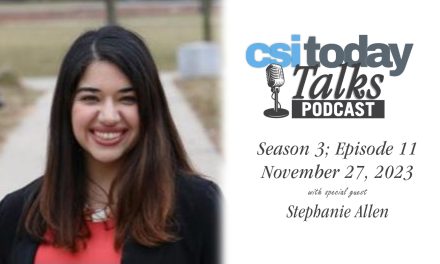“Inside the Cages” will feature Kurtin along with current Staten Island Advance Executive Editor Brian Laline discussing the breaking of the Willowbrook State School story that prompted a national outcry for justice
As part of the 2022 Year of Willowbrook at the College of Staten Island, the Willowbrook Legacy Project will present “Inside the Cages,” a look into how local journalism brought the startling story of the Willowbrook State School to light, through the pioneering reporting of Jane Kurtin. The event will take place virtually via Zoom on Wednesday, May 18, at 6:00pm.
Many know of the powerful exposé, broadcast fifty years ago, by ABC television journalist Geraldo Rivera. Rivera’s scathing report, Willowbrook, The Last Disgrace brought the story of Willowbrook to a national audience, but before this, the story had been “broken” — brought into the light — by a local journalist, Jane Kurtin. Kurtin’s stories in The Staten Island Advance went beyond the isolated articles about Willowbrook that had appeared in other newspapers, like the New York Times. Her reporting on Willowbrook looked at it from a multitude of angles and presented a sustained focus over several years of reporting on the struggles of the institution, its underfunding, the community’s response, and — most powerfully — on families’ agony and activism in the face of the institution’s harming of their loved ones. It is not an exaggeration to say that without Kurtin’s reporting, and without the local Staten Island Advance to publish it, the Willowbrook story might never have been told.
The Year of Willowbrook’s signature event for May will feature a discussion among Kurtin, Laline, and Willowbrook Legacy Committee member Diane Buglioli. The forum will also share selected photographs captured by the late photojournalist Eric Aerts, who accompanied Kurtin on her investigations inside Willowbrook (a retrospective gallery show of Aerts’s powerful work is planned for the Fall). The event will be introduced by Willowbrook Legacy Committee Co-Chair Nora Santiago, and an audience discussion will follow, facilitated by Willowbrook Legacy Committee Co-Chair, Dr. Catherine Lavender.
The event is free and registration is open. It will also be captured on video and will be made available through the Willowbrook YouTube channel.
For more information about The Year of Willowbrook, visit their Website.
About Willowbrook State School and The Willowbrook Mile
Willowbrook State School was the largest institution in the world in which people with disabilities were locked away from society. In 1938, the New York State Legislature had authorized the building of a school for what they then termed “mental defectives.” The Willowbrook site was selected and the buildings were erected in the early 1940s. However, when the U.S. entered the Second World War, the site was turned over to the military for use as a hospital and prisoner-of-war camp, Halloran Hospital, and operated in that capacity until 1951. As Halloran Hospital was closing down, the property returned to its original intended purpose as the Willowbrook State School. It opened in 1947, and intended to serve as a model of treatment for persons with intellectual and other disabilities.
When it opened, Willowbrook attempted to provide better care in an institutional setting than could be provided at home. However, the mere scope and size of the more-than-380-acre Willowbrook State School impaired its ability to provide normal, personalized comfort and care. As conditions worsened, a group of residents’ families and staff urged change. By the 1970s, they invited reporters to share the story more widely. Media coverage and this activism led to a lawsuit resulting in a 1975 Consent Judgement ordering that Willowbrook residents receive humane treatment and adequate clinical and educational services. This also set in motion the eventual closure of Willowbrook in 1987 and began the development of community-based services. Along with the 1975 Education for All Handicapped Children Act, the Willowbrook Judgement helped lead to later key legal protections, including the 1990 Americans with Disabilities Act (ADA).
In the early 1990s, spurred by a conviction that nothing like the Willowbrook story should ever happen again, the Staten Island Developmental Disabilities Council, the primary advocacy group on Staten Island for persons with disabilities and their families, formed the Willowbrook Property Planning Committee. They began to work on collecting and preserving the history of the Willowbrook State School and to increase the visibility of the stories of those who had once lived and worked in the facility.
In the 2010s, the Staten Island Developmental Disabilities Council partnered with the other stakeholders on the Willowbrook site: the College of Staten Island/CUNY, the Institute for Basic Research (IBR), and the Office for People with Developmental Disabilities (OPWDD) – to establish a memorial walking trail that has become the Willowbrook Mile. The Mile is designed to preserve the site’s history, and to create a visionary presence that commemorates the social justice and deinstitutionalization movement to ensure the rights of all persons to live with dignity and thrive in their communities.



















